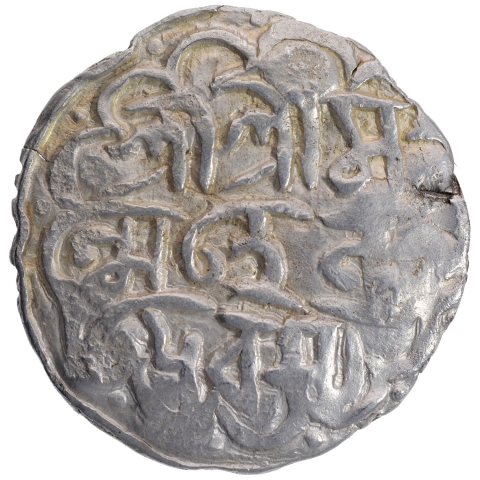This Lot is closed.
- P-Auction # 23
- Bids: 3
- Views:1377
| Start Price 500000 | Estimated Price 500000-700000 |
| login, to view Hammer value | |
| Quick Description | ||||
|---|---|---|---|---|
| Denomination | Silver Tanka | Mint | Pandunagar | |
| Metal | Silver | |||
| Full Description: Bengal Sultanate, Mahendra Deva (Saka 1340/AH 820/1418 AD), Pandunagar (Pandua) Mint, Silver Tanka, Obv: sri sri mahenra devasya within scalloped circle, Rev: sri chandi charana parayana within square, 10.56g, 29.91mm, (G&G # B323), choice very fine with counter marks, Extremely Rare. Mahendra Deva, the son of Raja Ganesh(Danujamardana Deva) revolted against the usurper, converted to Islam under the adopted name Jalal-ud-din Muhammad, and then himself mounted the throne as sultan of Bengal. It is said that jadu (the Hindu name of Jalal-ud-din Muhammad Shah) had embraced Islam with such fervour that he did not wish to regain a Hindu throne after the death of Danuja mardana Deva. For Ganesh’s son Jadu did not reign as a Hindu raja; nor was he installed with any of the appropriate symbols of Hindu kingship. Rather, in what appears to have been a compromise formula worked out between political brokers for the Bengali and Turkish factions, he converted to Islam, was renamed Sultan Jalal-ud-din Muhammad, and was then allowed to reign as a Muslim king. Immediately upon his accession to power in 1415, the new sultan minted coins in his Islamic name. That these coins were issued simultaneously from Pandua and the provincial cities of Chittagong, Sonargaon, and Satgaon suggests a calculated attempt by Raja Ganesh to ensure the acceptance of his son’s accession to power as legitimate over all of Bengal. The two successive Hindu kings, DanujaMardana Deva and his son Mahendra Deva, minted coins during precisely that period from Chittagong, Sonargaon, and “Pāndunagara,” an apparent reference to Chhota Pandua in south western Bengal.
| ||||


